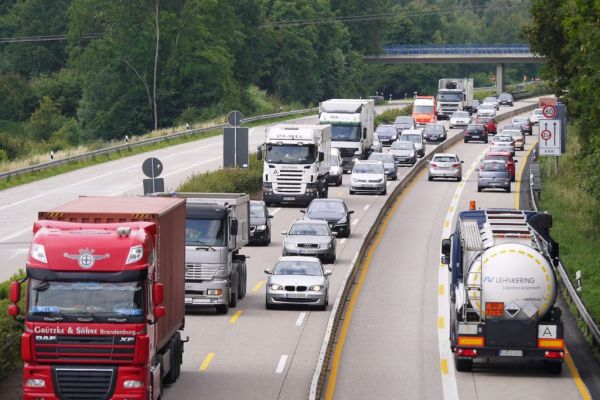As brand owners seek to enhance their values-led positioning, innovative logistics solutions can play a major role, says James Ash, head of EMEA communications at Manhattan Associates.
More informed and demanding than ever, consumers are now imposing iron-clad expectations on brands in the form of environmental and sustainability credentials.
With the boom in e-commerce, the transition to a circular economy is becoming even more important. The final delivery of this utopian, sustainable model, however, is largely based on the efficiency and innovation of transport networks.
Responsible Brands Vs. Traditional Models
It is widely recognised that the consumer-centric society we inherited following the industrial revolution has been largely responsible for the climate challenges we are facing today. This system must now give way to a more sustainable model, organised around the concept and transition from a linear to a circular economy.
This transition is governed by one keyword: responsibility. Over the last century, but particularly since the turn of the millennium and the advent of the world wide web, consumer appetite has become a meaningful, almost aggressive act, thanks in large part to the unprecedented power conferred by the digitalisation of commerce and the ability of consumers to interact directly with brands.
Brands can no longer be satisfied with just selling a product; they must provide information that goes beyond simply the price of the item – because it is on the basis of this information that 21st-century consumers increasingly makes their choices. They think less and less; 'Can I afford it?' rather, 'Does this brand align with my own individual values as a human being?'
Responsible consumption, therefore, begins with an informed and reasoned decision that is not only guided by the desire to acquire the product, but also shared brand-consumer values. And, increasingly those values are aligned around the sensitive, ‘hot button’ topics of environment and sustainability.
Creating New Customer Experiences
This transformation is reflected in a greater sensitivity to the various aspects of a product’s life, and increasingly to the potential for a second life, too. This can be seen in the dynamism of the second-hand market, with the success of sites such as Vinted and Music Magpie, as well as renewed interest in the reparability and reuse of products.
Alongside this, Mintel research estimates that 49% of UK online shoppers have sent something back in the last year. With the uninterrupted growth of e-commerce in the UK (46% in 2020 according to the ONS), returns weigh heavily on brands (and consequently consumers) when it comes to the question of carbon footprints and environmentalism.
So, what does this mean for brands? There is now a pressing need to inform consumers about the environmental impact of a product and its delivery. Increasingly, however, there is also an important need to innovate and create new scenarios that guarantee a brand’s eco-responsibility without eroding already squeezed margins.
For instance, fashion retailers could consider tackling this by offering customers a service that allows them to repair their clothes. This would not only extend their life span, but also reduce their environmental footprint.
Major e-commerce platforms are also innovating to reduce the economic and ecological impact of returns and enabling some brands to implement a customer-to-customer return service. Instead of sending the product back to be put back on sale, the customer offers it directly to other customers.
In contrast, Amazon is considering offering customers the ability to return products at the same time new ones arrive (to drivers), as a step-change in its reverse logistics process.
Tackling The Carbon Footprint
Whether we are talking about repairing a product, putting it back into circulation in the second-hand market or returning it after an online purchase, at its essence we are talking about transport and transportation networks.
Managing the entire lifecycle of products means managing its physical re-injection into a circular (rather than linear) economic model.
In order to endorse these new scenarios that underpin the circular economy, it is therefore necessary to put in place logistics solutions that are themselves innovative.
These solutions must not only reduce the carbon footprint on the upstream part of transport (the part that customers don’t see, between suppliers and the warehouse) and the downstream part (delivery), but also offer more solutions to customers that fundamentally promote more sustainable, environmentally-aware action on their part, as well as on the part of the end consumer.
Dispersed Transport Network
However, innovative solutions in themselves can often create new challenges: they lead to a much more dispersed transport network than that which shippers are used to dealing with in B2C deliveries; not to mention the multiplication of collection points, the unpredictability of delivery orders and the increase in unit order flows, etc.
These factors make it more difficult to manage transport in an environmentally responsible way while controlling costs.
There is therefore, a risk for the circular economy, producing the opposite effect to that which it was created to solve.
To avoid this, we need to be able to rely on a much more dynamic delivery network, capable in particular of maximising consolidation opportunities, using smarter, environmentally friendly means of transportation, promoting collaborating with delivery start-ups and industry disruptors, while offering optimisation tools capable of taking all these factors into account.
To offer consumers a truly circular economy, first and foremost we need to transform the way transportation is thought about and managed.
© 2021 European Supermarket Magazine. Article by James Ash, Manhattan Associates. For more Supply Chain news, click here. Click subscribe to sign up to ESM: European Supermarket Magazine.














